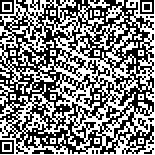| This article has been:Browse 1762Times Download 2843Times |

scan it! |
|
|
| DOI:10.13522/j.cnki.ggps.2019305 |
|
| The Effects of Spatial Layout of Drip Irrigation Belts on Growth and Water Use Efficiency of Golden Pear |
|
WANG Linlin1, WU Wenyong2, XIAO Juan1, HUANG Qiannan3
|
|
1. School of Water Conservancy Science and Engineering, Taiyuan University of Technology, Taiyuan 030024, China; 2. Department of Irrigation and Drainage, China Institute of Water Resources and Hydropower Research, Beijing 100044, China;3. School of Soil and Water Conservation, Beijing Forestry University, Beijing 100083, China
|
| Abstract: |
| 【Background】Water scarcity is the bottleneck of social-economic development in China and agriculture is the biggest water consumer as the water resource bulletin in 2018 revealed that water usage by agriculture accounts for 61.4% of the total water consumed by all sectors combined in China. Developing water-saving irrigation is hence inevitable to improve irrigation water use efficiency in constructing sustainable agriculture. Drip irrigation is a micro irrigation technology that not only saves water but also increases crop production and improve soil quality; it has been widely using in agriculture, especially for cash crops. Literature review reveled that irrigation water use efficiency (WUE) of drip irrigation is impacted by spatial layouts of its belts, but the available study was limited to crops. There is a paucity of study on cash plants like fruit trees. 【Objective】The purpose of this paper is to plug this gap. We selected eight-year old golden pears as model plant and experimentally studied the effects of different spatial arrangements of drip-irrigation pipes on growth and water use efficiency of the pears. 【Method】We compared four spatial arrangements: a single line laid on the ground surface (CK), double lines laid on the ground surface (T1), double lines buried in the subsurface (T2), and a ring laid on the ground surface (T3). In each treatment, we measured and calculated daily growth of new shoots, fruit shape indexes, fruit yield and quality, water consumption and water use efficiency. 【Result】T2 increased both yield and water use efficiency compared to other treatments. The growth of new shoots, daily fruit growth, yield and water use efficiency of T3 were higher than those of CK and T1. While T1 reduced fruit yield by 4.88% compared to CK, it reduced the total water consumption by 46.92% and increased water use efficiency by 40.08%, in addition to promoting daily growth of new shoots. There was no significant difference in fruit shape indexes and fruit quality between the treatments. 【Conclusion】For increasing yield and saving water, double lines buried in the subsurface were the best spatial layout of the drip-irrigation belts. |
| Key words: golden pear; drip irrigation pipe arrangement; yield; water use efficiency |
|
|